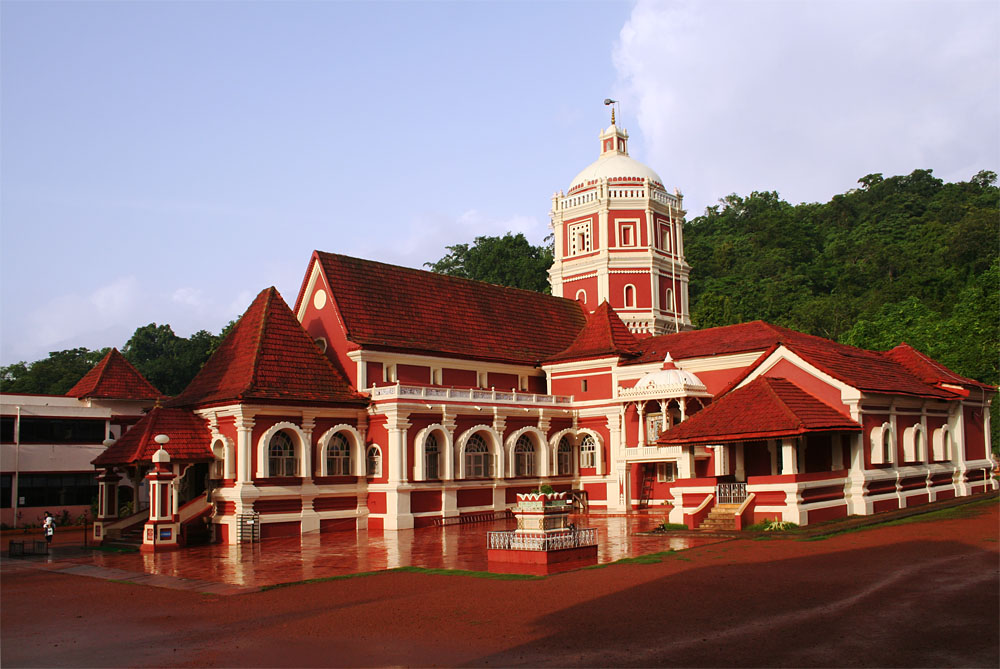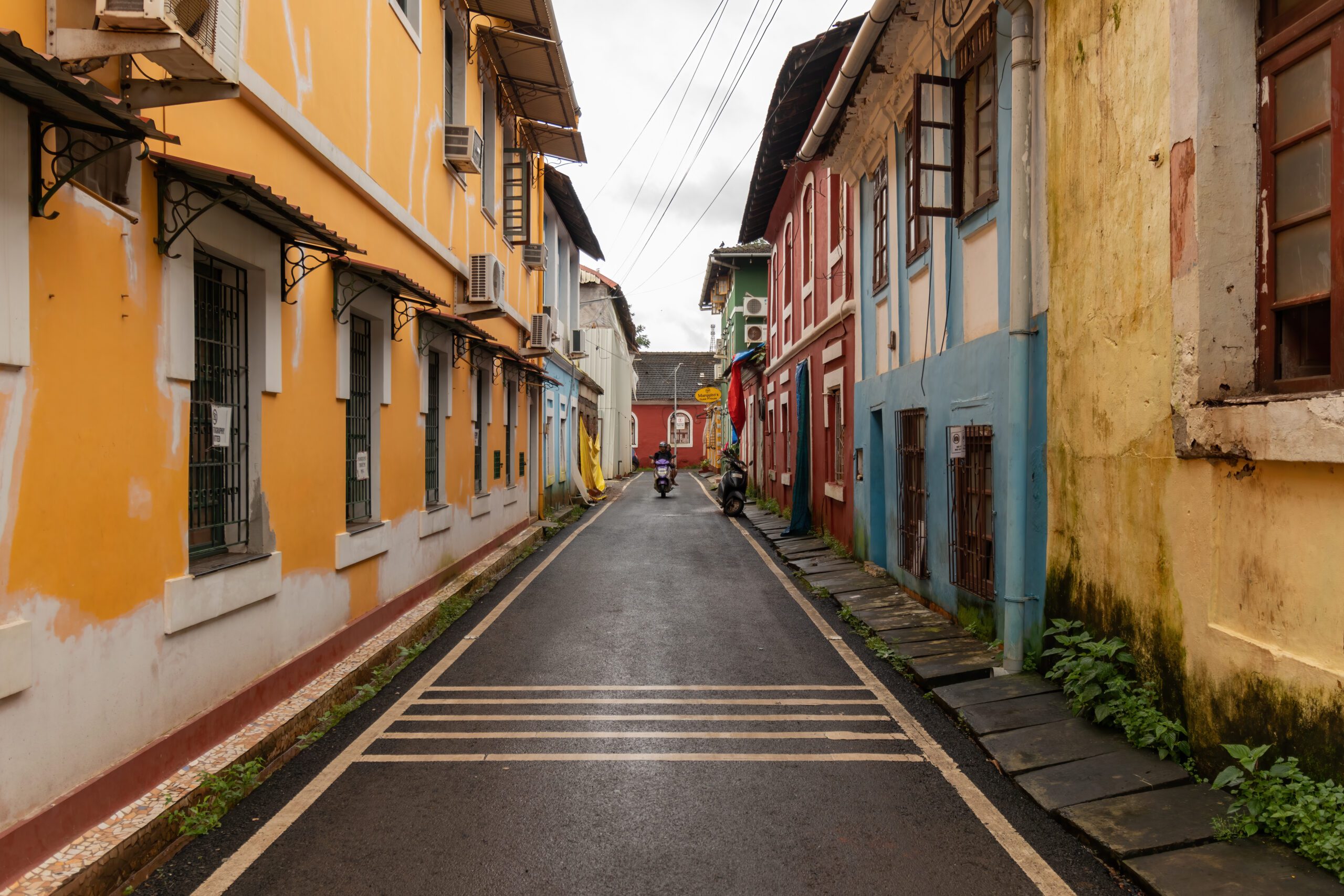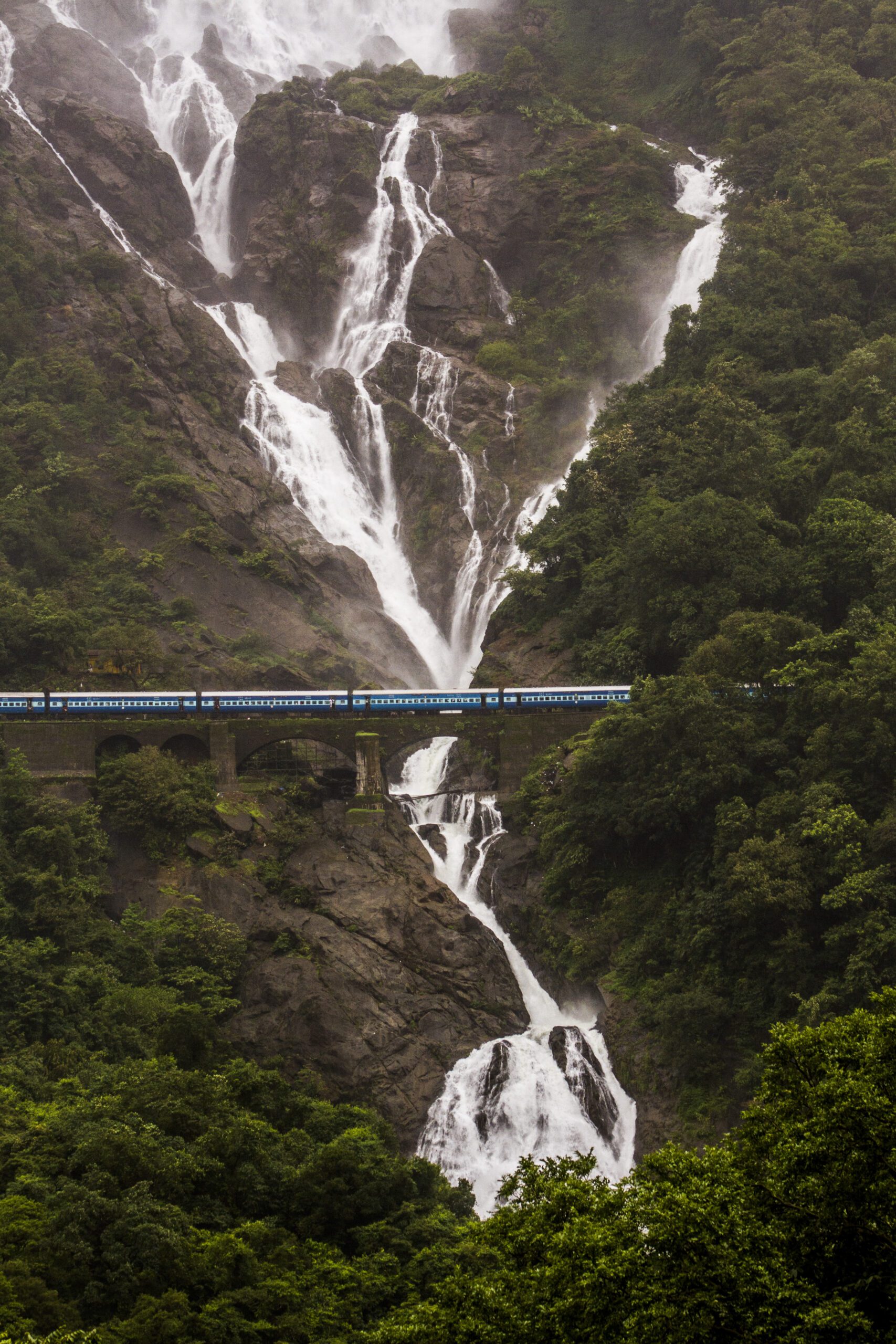
Shri Shantadurga Temple, located in the serene village of Kavale (Kawalem) in Ponda, Goa, is one of the most revered and architecturally striking temples in the state. Dedicated to Goddess Shantadurga, the deity is worshipped as the mediator between Lord Vishnu and Lord Shiva—symbolizing peace and reconciliation. According to legend, she calmed a fierce battle between the two gods, embodying her name “Shanta” (peace) and “Durga” (the warrior goddess).
Shri Shantadurga Temple – Timings
Temple Timings:
- 6:00 AM to 8:30 PM (daily)
- The temple remains open all day with brief intervals for maintenance or rituals.
Aarti Timings:
- Morning Aarti: 7:00 AM to 7:30 AM
- Afternoon Maha Naivedya Pooja: 12:30 PM to 1:00 PM
- Evening Aarti: 7:00 PM to 7:30 PM
For the most peaceful experience, visiting during the early morning or evening aarti is highly recommended.
History of Shri Shantadurga Temple, Goa
The Shri Shantadurga Temple in Kavale (also spelled Kawalem), Ponda, has a rich and resilient history that reflects Goa’s cultural and religious journey through the centuries.
Originally, the idol of Goddess Shantadurga was worshipped in a temple at Quelossim (Keloshi), near the Zuari River. This temple was a prominent center of worship for the Goud Saraswat Brahmins, one of the oldest Brahmin communities in Goa. However, in the 16th century, during Portuguese colonial rule and the wave of religious persecution that accompanied it, many Hindu temples in coastal Goa were destroyed—including the original Shantadurga temple.
To protect the sacred idol from destruction, the devotees secretly moved it inland to the safer region of Ponda, which at the time was under the rule of the tolerant Adilshahi Sultanate. Eventually, when the region came under Maratha rule, conditions allowed for the formal construction of a new temple.
The present temple at Kavale was built between 1730 and 1738 under the patronage of Chhatrapati Shahu Maharaj, the grandson of the legendary Maratha warrior king Shivaji. His trusted minister, Naroram Mantri, played a crucial role in organizing and overseeing the temple’s construction. In 1739, the village of Kavale was officially granted to the temple to support its activities and upkeep.
Throughout its history, the temple has undergone several renovations—most notably in the 20th century and again in more recent times—preserving its structure while enhancing facilities for pilgrims.
Today, Shri Shantadurga Temple stands not only as a place of deep spiritual significance but also as a monument to the resilience of faith and the preservation of Goan Hindu traditions during challenging times.
Architecture of Shri Shantadurga Temple, Goa
The architecture of Shri Shantadurga Temple at Kavale is a stunning blend of Saraswat temple design and Indo-Portuguese influences, making it one of the most architecturally distinctive Hindu temples in Goa.
1. Temple Structure & Style
- The temple was built in the 18th century using red laterite stone and lime plaster, giving it a warm reddish appearance typical of Goan temples.
- It combines traditional Hindu temple elements with colonial architectural touches, especially in its use of arched windows, domes, and colonnaded halls.
2. Shikharas & Domes
- The temple features three prominent domes over the sanctum and mandapas.
- Instead of the typical North Indian curvilinear shikhara, it has pyramidal shikharas more common in Goa and parts of Karnataka and Maharashtra.
- The domes are topped with kalashas (finials) and are beautifully proportioned, giving the temple a regal yet harmonious presence.
3. Deepa Stambha (Lamp Tower)
- A tall and elegant Deepa Stambha, or lamp tower, stands in front of the temple.
- It is intricately carved and lit during festivals, creating a glowing spectacle that enhances the sacred atmosphere.
4. Arched Windows & Balconies
- The temple has Roman-style arched windows with stained or colored glass—an influence of Portuguese baroque architecture.
- Beautifully crafted balconies and cornices adorn the outer structure, adding grace and ventilation.
5. Interiors & Materials
- The temple’s flooring and pillars are made from polished Kashmir stone and black granite, adding both durability and elegance.
- The Sabhamandap (assembly hall) and Antarala (vestibule) are spacious and often decorated with chandeliers and wooden carvings.
- The inner sanctum houses the idol of Goddess Shantadurga, who is uniquely depicted holding two serpents—symbolizing her role in reconciling Vishnu and Shiva.
6. Temple Tank & Gardens
- A sacred tank (Pushkarini) lies within the complex, used for ritual purification.
- The temple grounds include courtyards, shaded pathways, and landscaped gardens, offering peace and calm to devotees.
Images of Shri Shantadurga Temple
Festival & Rituals of Shri Shantadurga Temple
Shri Shantadurga Temple is not only a sacred spiritual destination but also a vibrant cultural hub, where age-old traditions and grand festivals are celebrated with great devotion and community participation.
Major Festivals Celebrated
1. Shishirotsav / Jatra Mahotsav (Annual Temple Festival)
- Held in Magha month (Jan–Feb), this is the grandest celebration at the temple.
- Features ritual processions of the goddess on palanquins (palkhis) made of gold and silver.
- Includes deep-stambh lighting, music, folk dance, religious discourses, and mass feasts (Mahaprasad).
2. Mahapanchami
- Celebrated five times a year, marking important astrological or mythological days.
- The deity is taken out in a golden palanquin, and special poojas are conducted.
3. Navratri
- A nine-day festival worshipping feminine divine energy.
- Daily poojas, recitations, and decorative themes inside the sanctum.
- Ends with Durga Ashtami and Vijayadashami celebrations.
4. Deepavali (Diwali)
- The temple is illuminated beautifully.
- Special prayers and oil lamp rituals (Deepotsava) are held.
5. Tulsi Vivah
- Symbolic wedding of Tulsi (holy basil) and Lord Vishnu.
- Involves traditional wedding rituals with sacred songs and food offerings.
6. Rathotsav (Chariot Festival)
- The idol is placed in a beautifully decorated wooden chariot and pulled by devotees around the temple premises.
- Accompanied by drums, conch-blowing, and Vedic chants.
7. Ram Navami & Mahashivratri
- Celebrating the birth of Lord Rama and devotion to Lord Shiva respectively.
- Includes fasting, bhajans, and late-night poojas.
How to Reach Shri Shantadurga Temple
How to reach Shri Shantadurga Temple located at Kavale (Kawalem), Ponda, in Goa:
1. By Air:
- Nearest Airport: Goa International Airport (Dabolim) – approx. 40 km
- Travel Time: ~1 to 1.5 hours by taxi or car
Options:
- Hire a prepaid taxi from the airport
- Rent a self-drive car or scooter
2. By Train:
- Nearest Major Station: Madgaon (Margao) Railway Station – approx. 21 km
- Alternate Station: Vasco da Gama – approx. 33 km
- Travel Time: ~45 minutes to 1 hour by taxi or auto-rickshaw
- Taxis and local buses are available from both stations.
3. By Bus (Public Transport):
From Panaji (Panjim):
- Take a Kadamba Transport Corporation (KTC) bus to Ponda
- From Ponda bus stand, hire a local rickshaw or taxi to Kavale village (~4 km)
From Margao or Vasco:
- Buses to Ponda run regularly
- Local transport available from Ponda to the temple
4. By Road (Self-Drive/Taxi)
- Panaji to Kavale: ~33 km (≈45 minutes)
- Margao to Kavale: ~21 km (≈40 minutes)
Roads are in good condition; parking is available near the temple.
5. Local Transport Options
- Rental Scooters/Cars: Easily available in Panaji, Margao, and near the airport
- Auto-rickshaws: Available in Ponda for short-distance travel
- Taxis: Book via local operators or app-based services (GoaMiles)






